
Although we’ve often ridden our bikes through the stunning country that surrounds the Upper Noosa River, I’ve never had the chance to paddle on the river until now. For the last three days Harrison and I have been exploring this unspoilt paradise by canoe.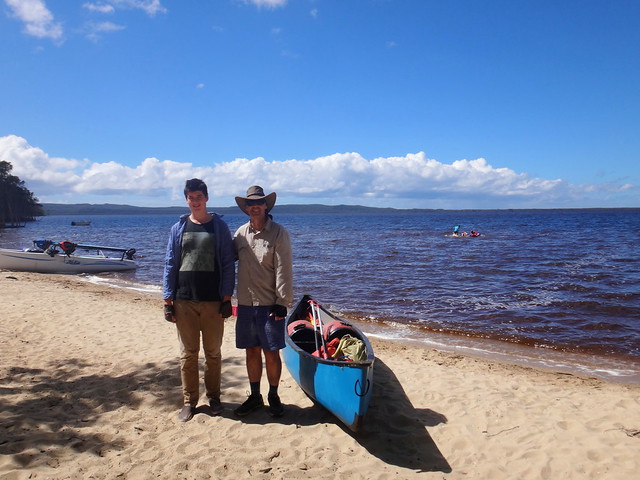
Day 1. Elanda Point to Harrys Hut.
11km. 3 hours 35 minutes.
Both of us are relative newcomers when it comes to any form of paddling. We hired a two man canoe from the kind folks at Elanda Point camp ground, who assured us that while they’re a bit more challenging to steer than a kayak, they hold much more gear, and are easier to load and unload than their sleeker cousins.
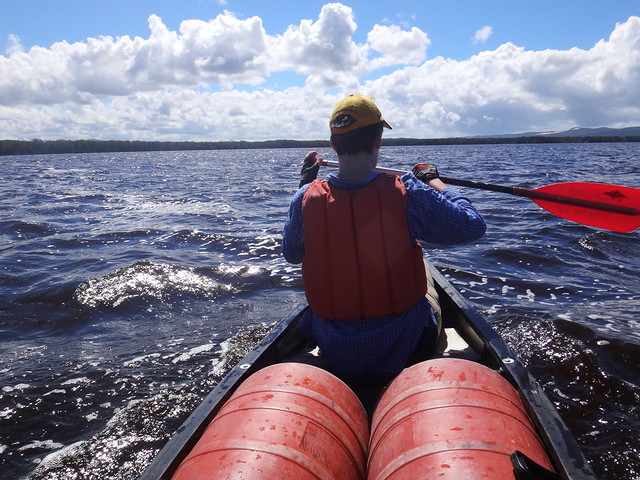
As we set off across the waves of Lake Cootharaba, I wondered whether or not we had made the right choice. The wind pushed us from side to side as we bounced over the choppy water. Several times I feared that we would capsize. Harrison and I found it difficult to synchronize our strokes, so the canoe snaked off in all directions as though it had a mind of its own, first heading back towards shore, then in towards the middle of the lake. I wondered if we’d ever make it to the other side.

After about an hour of frantic paddling against the breeze and waves, we reached the other side and slid past a bunch of bemused pelicans into the calmness of the Kinaba Information Centre.
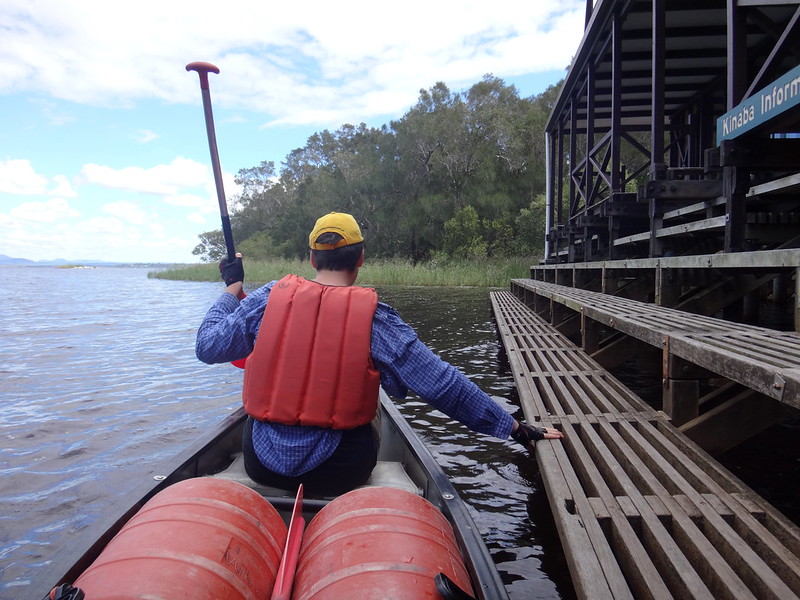
This waterside information centre includes displays, walkways and a steps down to the water. It was the perfect place for a couple of bedraggled novices to have a quick break out of the wind.
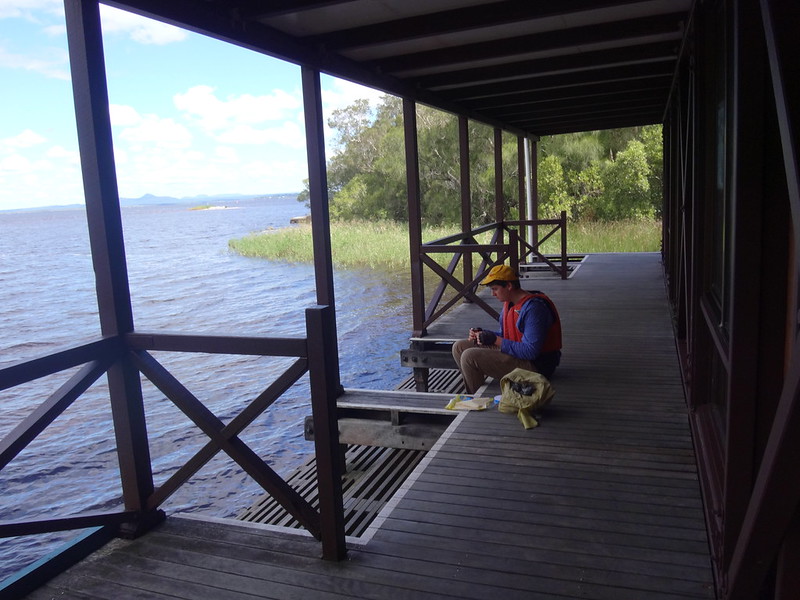
We lashed the canoe to the lower stairs and had a bite to eat on the wide wooden decks, relieved that we’d got through the most challening part of todays journey.
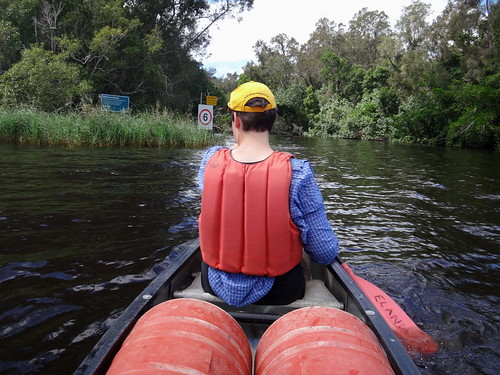
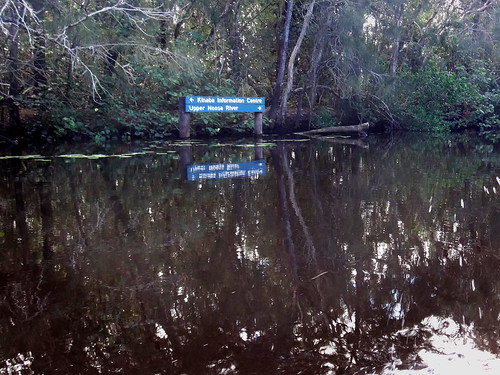
After Kinaba, we followed the river upstream. Thick forest either side protected us from the breeze, and the water was glassy smooth. Even though I had my trusty GPS with a course set, large friendly signs on the riverbanks made it easy for us to find our way.
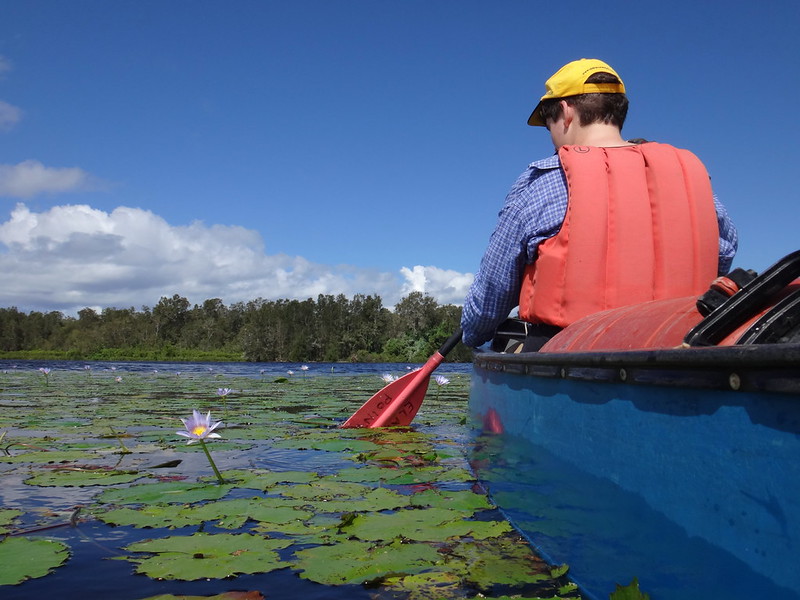
We glided through vast fields of water lillies as we made our way upstream.

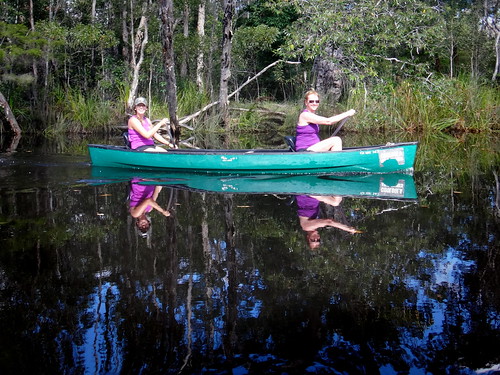
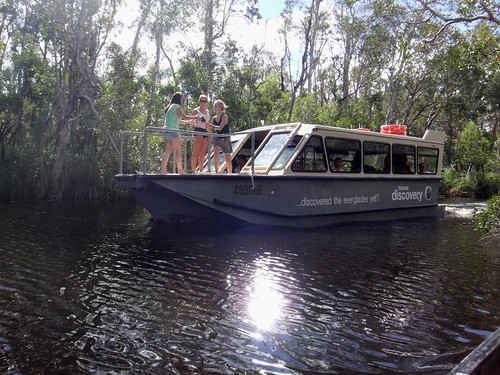
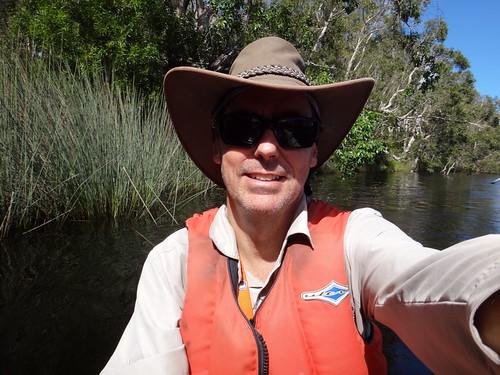
Everyone we passed on the river seemed happy to be here.
I called out a friendly “G’day” to people as they floated by. Unfortunately I stopped paddling while I took photos of them. This inevitably meant our canoe would veer off course while Harrison continued to paddle on one side while I did not. We’d often end up ploughing into the river bank to the amusement of our new friends in the other boats.
As the river closed in either side of us, my tiring teammate was starting to feel sore in muscles he didn’t often use.
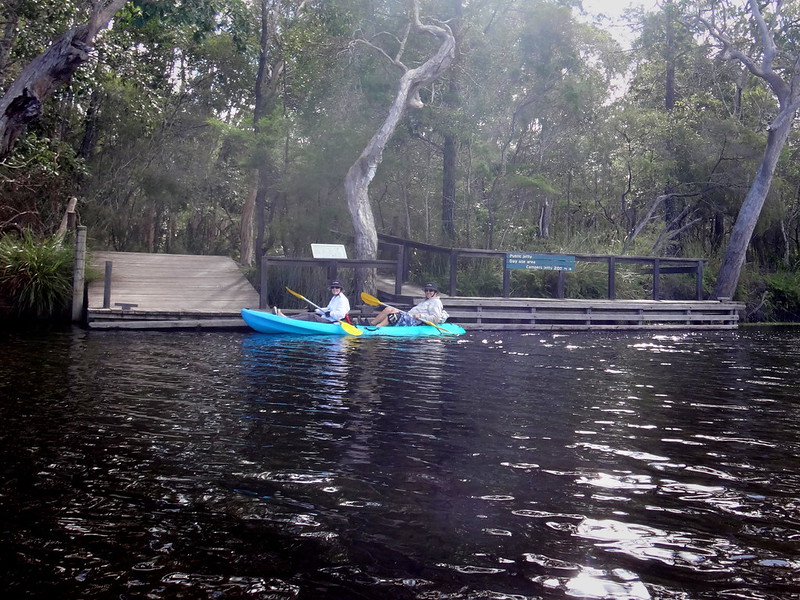
We push onwards and were relieved to finally reach Harry’s Hut, the destination for our first day.
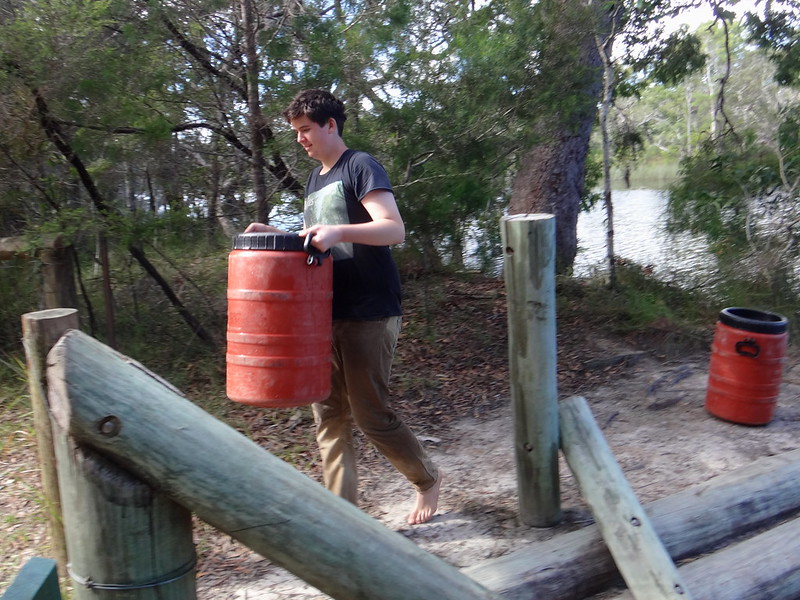
The people who hired the canoe to us also supplied a couple of large barrels in which we could safely stow all our gear. This kept everything dry, even in the event of a capsize, and made it very easy to load and unload the canoe.
In a short time I had the water boiling for afternoon tea. I also cracked out a small flask of red wine that I had packed away beforehand in a plastic drink bottle.
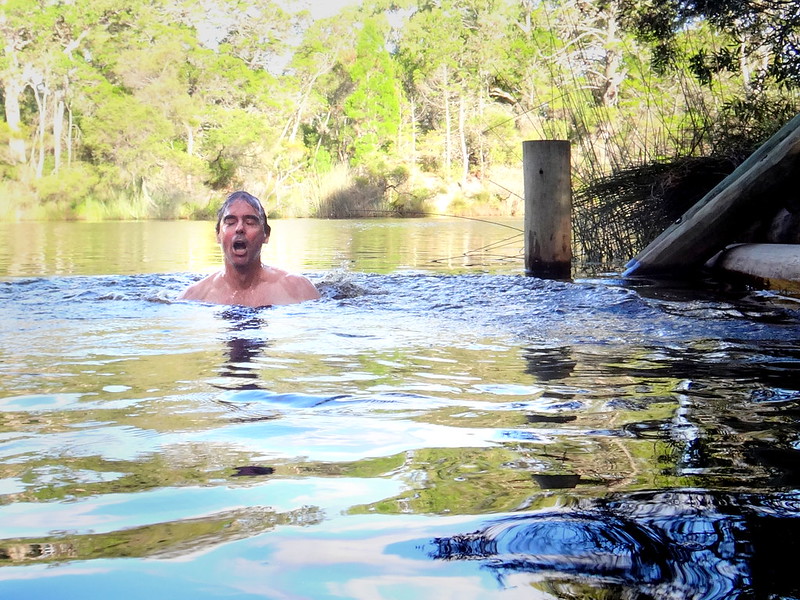
Although the signs said there might be bullsharks in the water, we couldn’t resist a quick swim. I was rather surprised by the coolness of the water as I sank beneath the surface.

Harrys Hut is a great camping spot. Although there are spots for numerous drive-in or paddle-in campers, it was still serene, the quietness being broken by bird-song, crickets, and the unavoidable whine of mosquitoes.
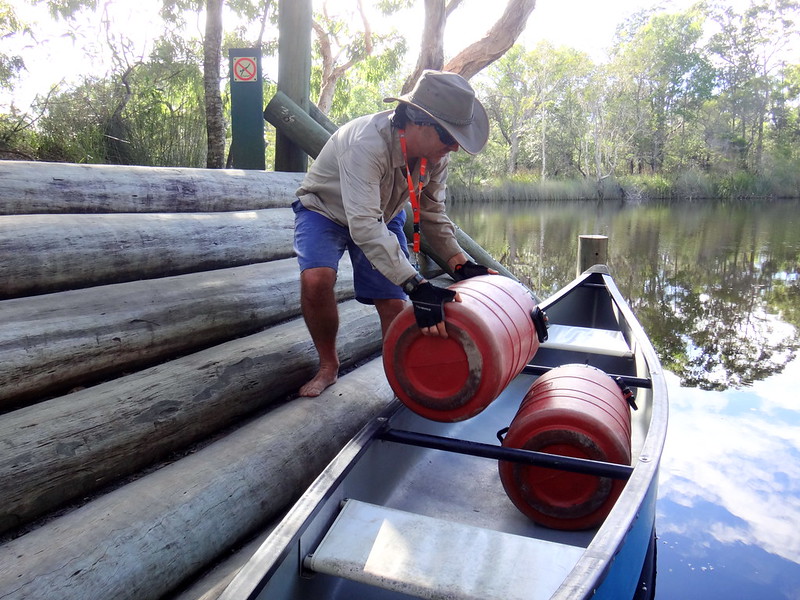
Day 2. Harrys Hut to Fig Tree Point via Campsite 2.
(Including 4km hike)
13.5km. 4 hours 47 minutes.
Without the comforts of home, we went to sleep when it got dark, and woke up when it got light.
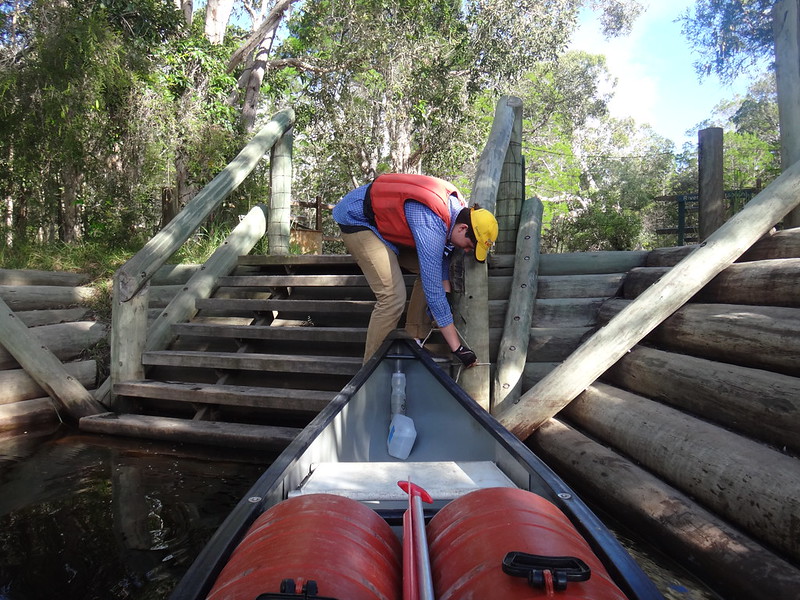
We then re-loaded our trusty canoe and headed further up the river.
I was interested in the tracks on the other (eastern) side of the river. Since you need some sort of watercraft to get to the other side, they’re less used. I wanted to know if in future it would be possible to ferry mountain bikes across the river, get them up on the bank, and ride the tracks.
There were one or two spots we could have come ashore, but the banks were too steep to safely lift bikes up.
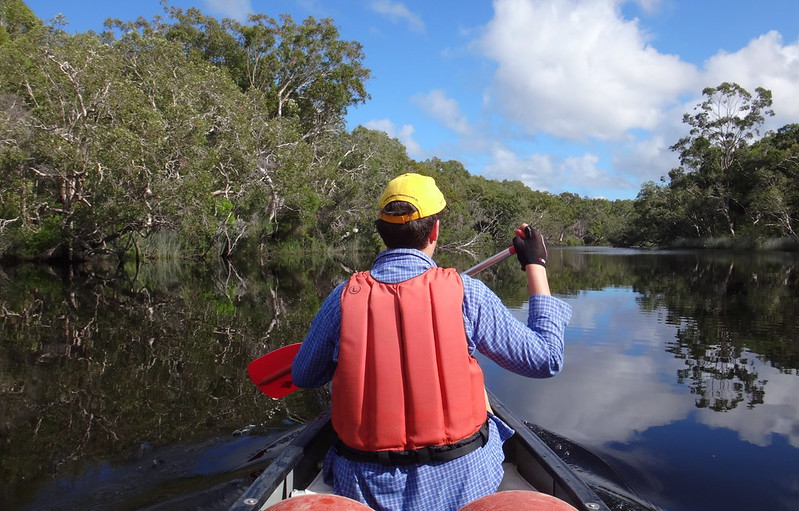

So we just paddled a while on the mirror-like river, enjoying the unbroken reflections in the tea-colored water.
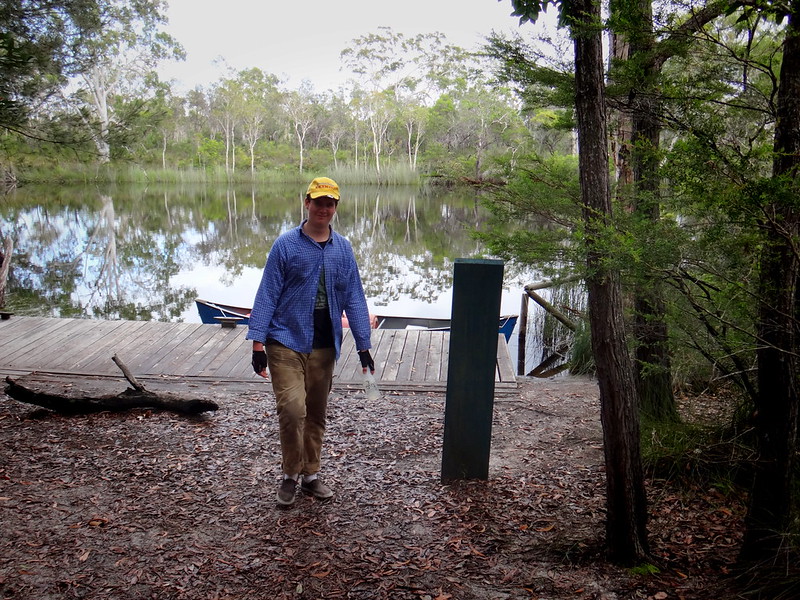
Campsite 1 wasn’t far upstream from Harrys Hut. I made a mental note that this would be an easy place to bring mountain bikes ashore.
We decided to moor the canoe here and follow the walking track.
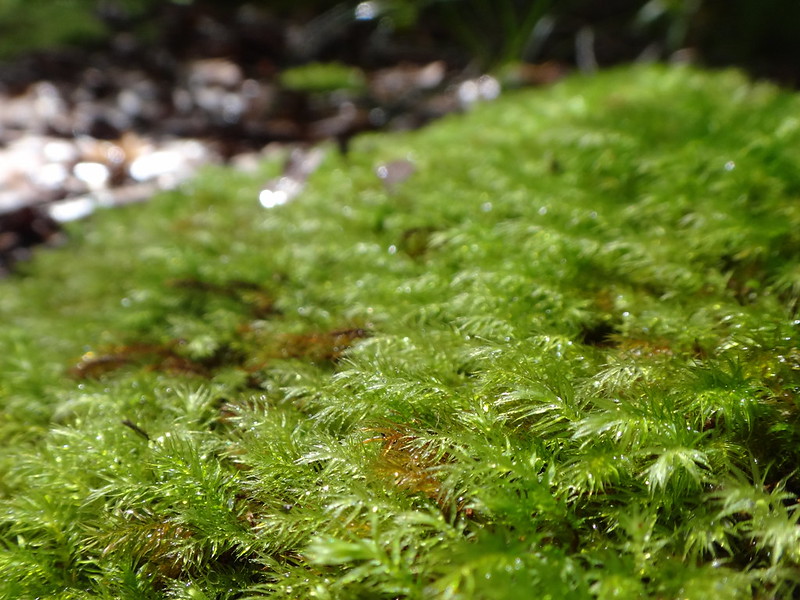
Within a few steps the environment would change abruptly as we moved from one eco-system to the next.
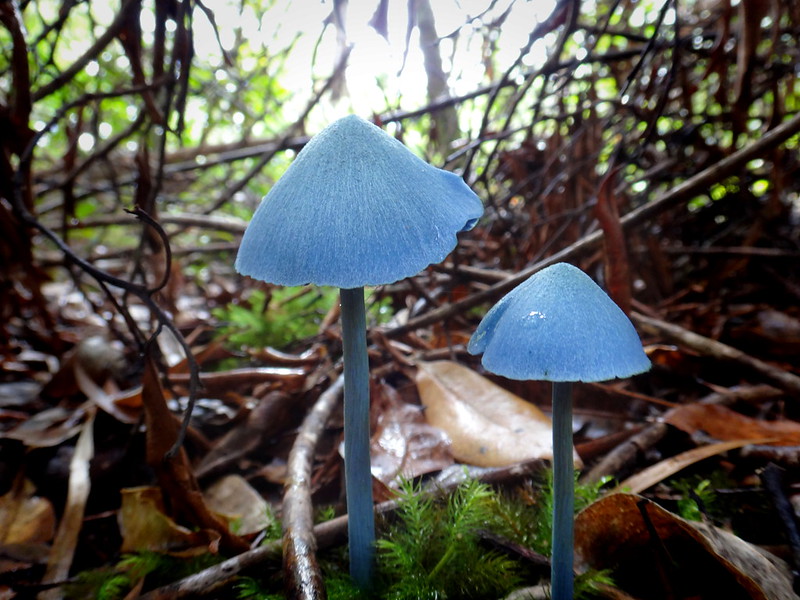
Blue mushrooms? I didn’t even know such things existed!
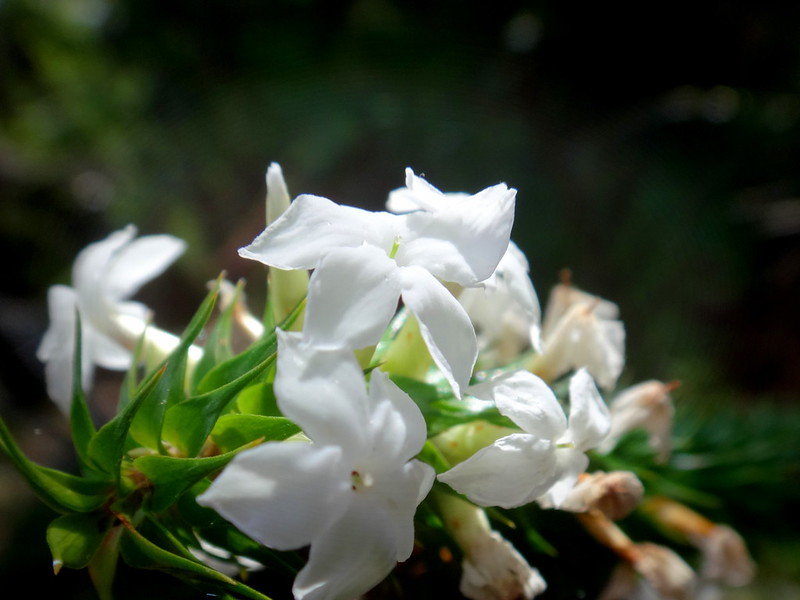
This is the sort of place to be enjoyed slowly. There are surprises around every corner.
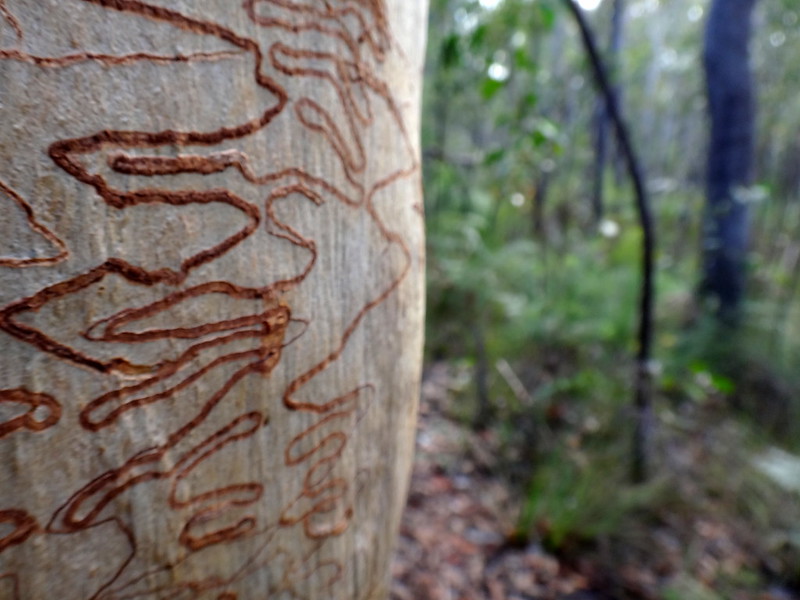
Even the tree bark is decorated festively.

I’m grateful such beautiful places exist so close to home.

After a couple of kilometres walking, we stopped for a bite to eat at Campsite 2, then retraced our steps back to our canoe.
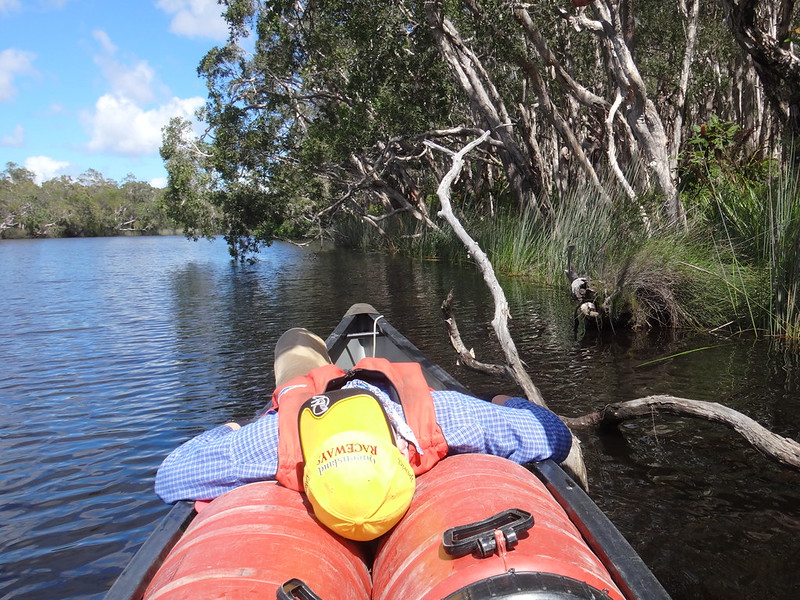
As we started downstream, Harrison was feeling both relaxed and tired. I agreed to paddle solo for a time while he took it easy.
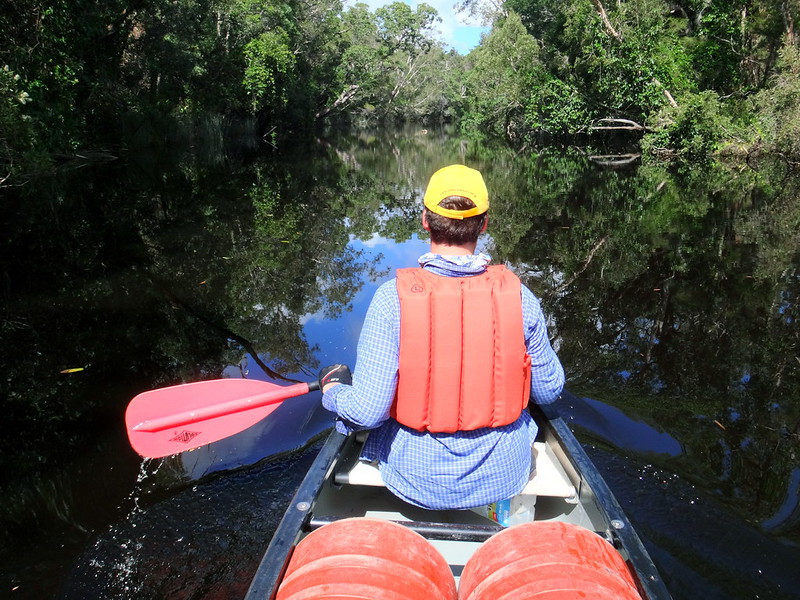
There was no rush. It was not far to our second campsite so we glided downstream at a leisurely pace.
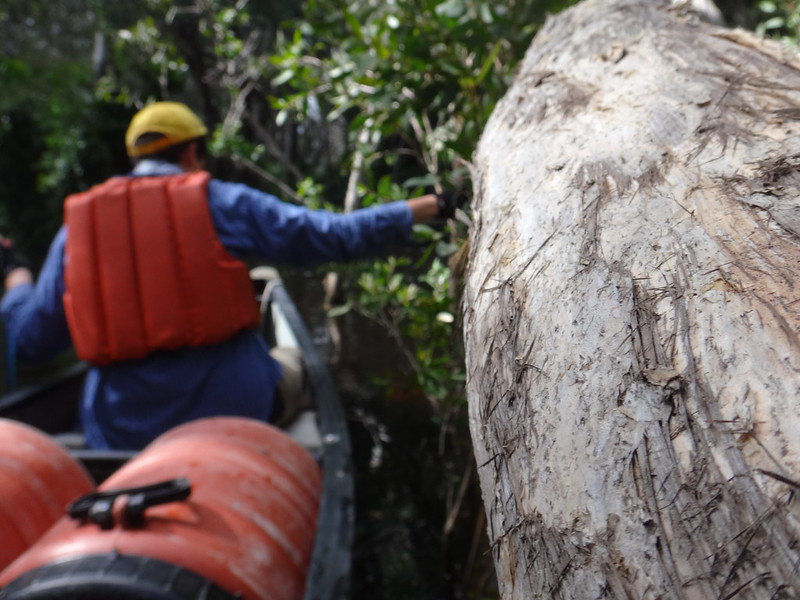
Occasionally we edged up to some of the paperbarks overhanging the water to get a closer look.
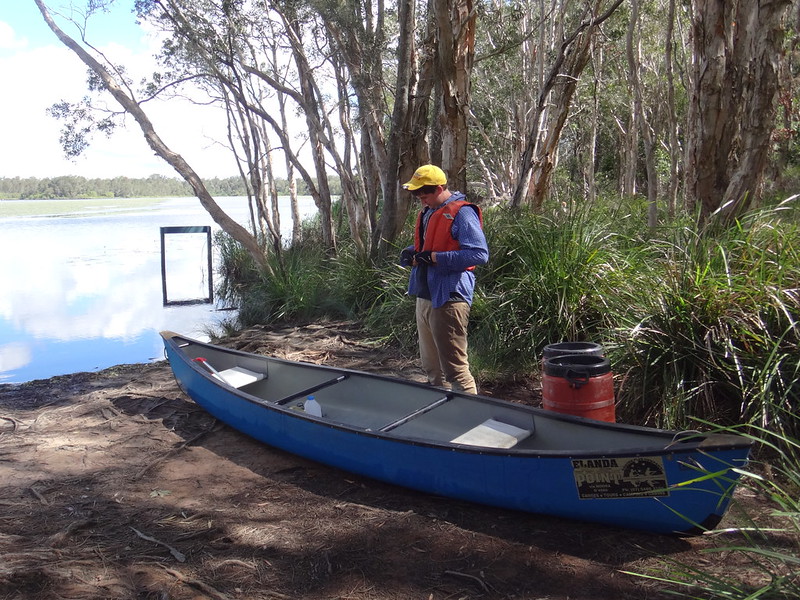
Eventually we came ashore at Fig Tree Point, and unloaded our canoe for our second night.
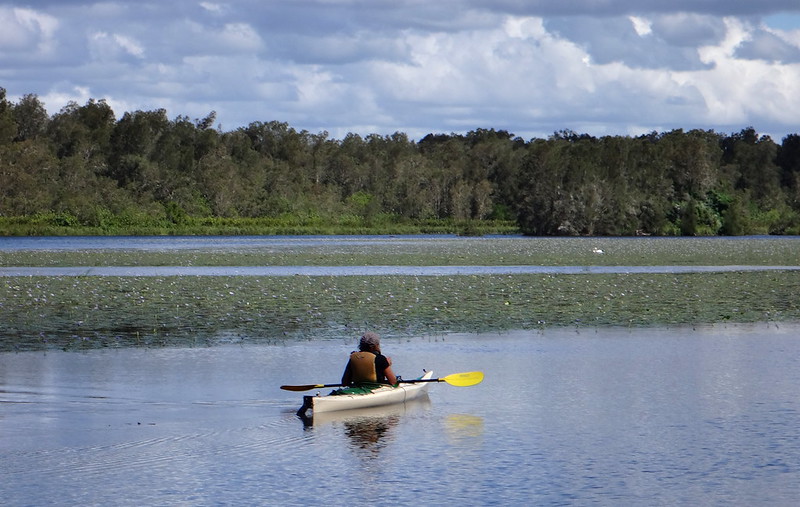
This spot is on the edge of a large lagoon festooned with water lillies. Kayakers, pelicans and ducks floated through what looked like a Claud Monet painting.
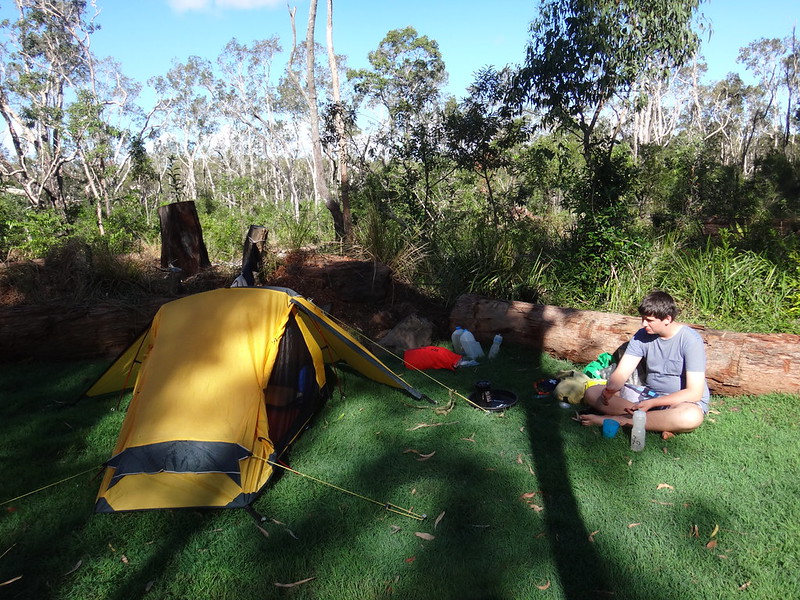
The QNPWS has recently made some improvements to the campgrounds, including laying some thick soft grass. It was a perfect spot to pitch our tent.
In case you’re wondering, that’s a two-man tent. Both Harrison and I are over six feet tall, so we think it would be more accurately described as a one-and-a-half man tent. And in this case, I felt like I was the “half-a-man”.
I enjoyed another swim while Harrison glided around on the late afternoon water.
Day 3. Fig Tree Point to Elanda Point.
5km. 1 hours.
It rained overnight. I had to get up several times to ether close the tent against the rain, or open it up to let in fresh air.
I half-wrestled with Harrison to claim my “half” of the tent.
Despite our broken sleep on hard ground, we awoke next morning to a melodic chorus of bird song. It seemed much more pleasant than an alarm clock.

We were getting to be old hands at packing our canoe, and were back on the water in record time.
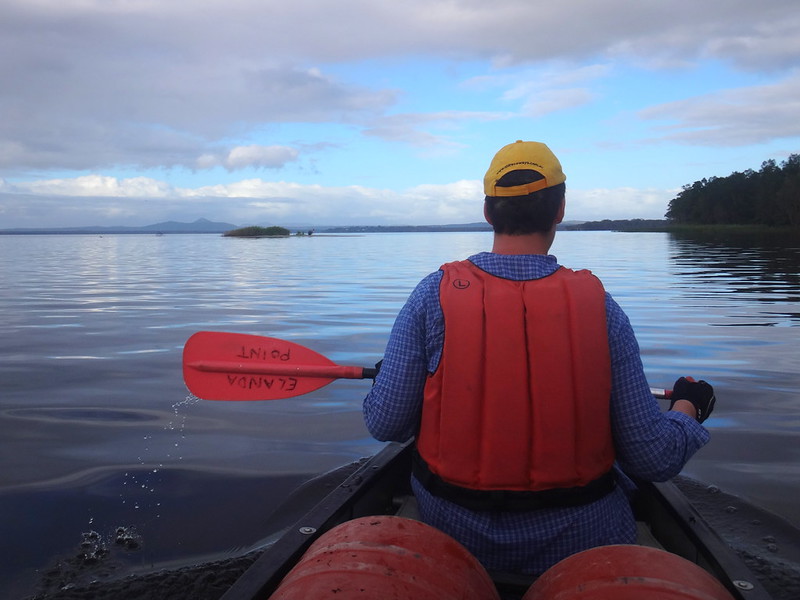
We hit the lake early in the day, and didn’t have to contend with opposing breezes or waves. We also felt more competent at steering. Unlike our first amateurish foray across the lake, we were able to keep a straight line as we returned to our starting point. The trip back was much more comfortable.
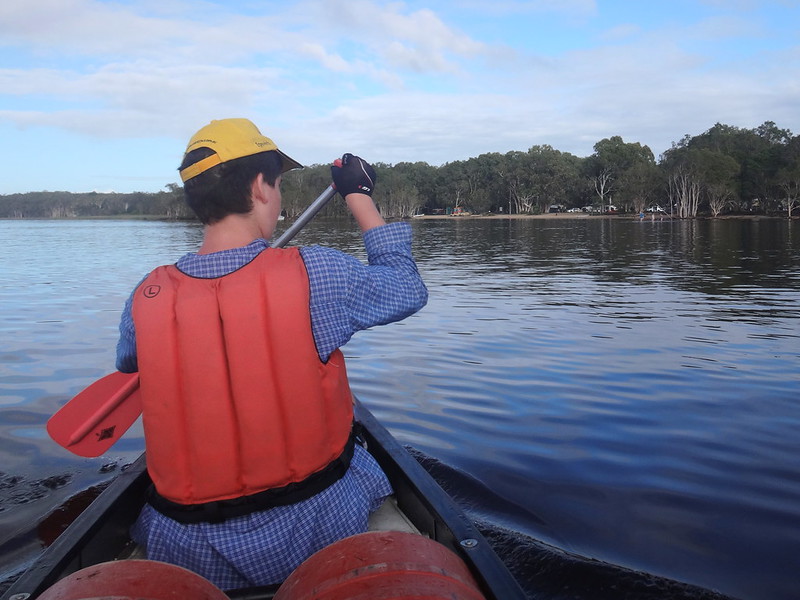
In a suprisingly short time we arrived back at Elanda Point.
In total we paddled about 26km and hiked about 4km.
Neither of us had canoed before, and both of us only had average upper body fitness.
This was a relatively easy adventure which covered some spectacular sites. It was well worth the effort.
Things We Did Right
- Canoe instead of a kayak. We would never have been able to carry all our gear in a kayak.
- Cycling gloves. Gloves protected our hands from blisters.
- Long-sleeved shirt. The Queensland sun is strong – long sleeves are good from sunburn.
- Insect Repellant. The mosquitoes on the Noosa River are ferocious at night.
- JetBoil. This compact gas powered stove provided boiling water in lightning fast time.
- AquaTabs. Water purifying tablets allowed us to drink water from the rain tanks at the camp grounds.
- Waterproof Barrels. When it rained at night, our gear was stowed dry in the barrels. They simplified loading and unloading the canoe.
- Plastic bags. Perfect for stowing wet clothes.
- Wine. (Thanks Wayne for the suggestion). A bike bottle with a bit of red wine was a nice touch at the end of the day.
Things We Did Wrong.
- Mosquito Coils. We should have brought these to light around our Campsite.
- Started Earlier. On day one. we would not have had so much rough water if we had started a couple of hours earlier.
- Salty Snacks. Nuts and Crisps are perfect to have with wine at the end of the day. We didn’t bring enough.
- Communicate. On the water each paddler needs to know what the other is doing in order to keep the canoe moving straight. It took us a while to work this out.
Thanks Harrison for a fun adventure!

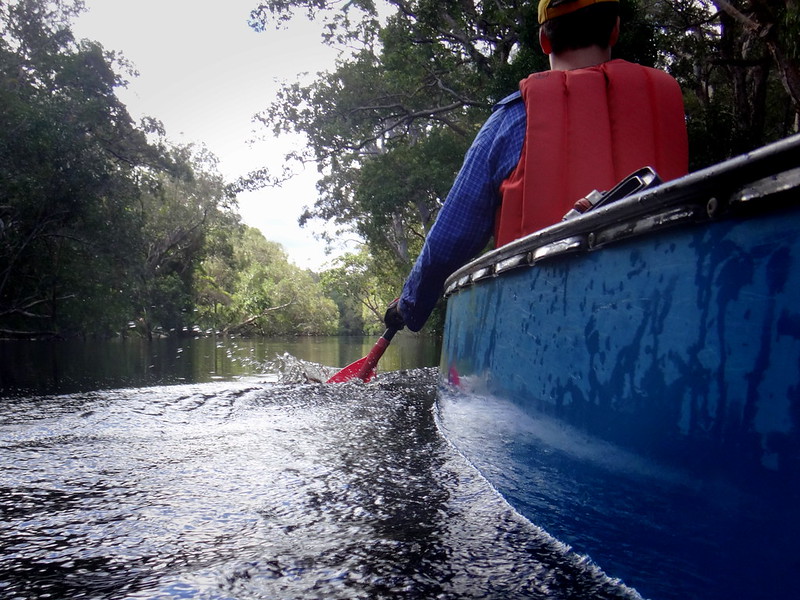
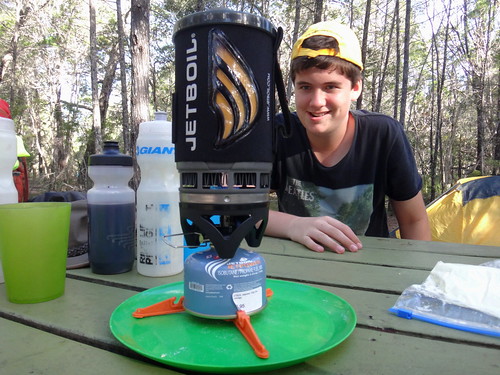
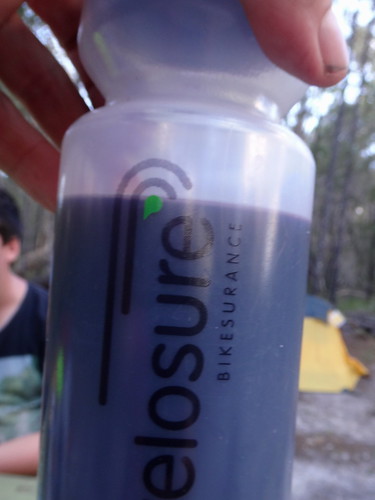

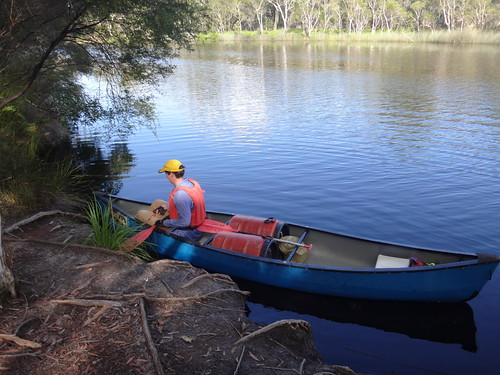
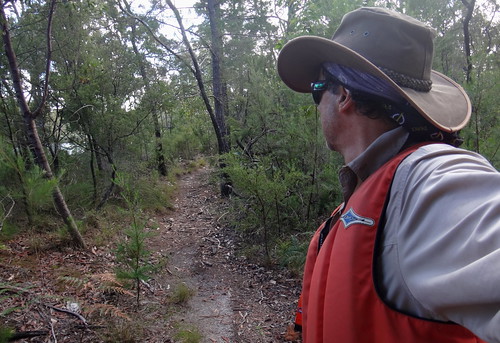
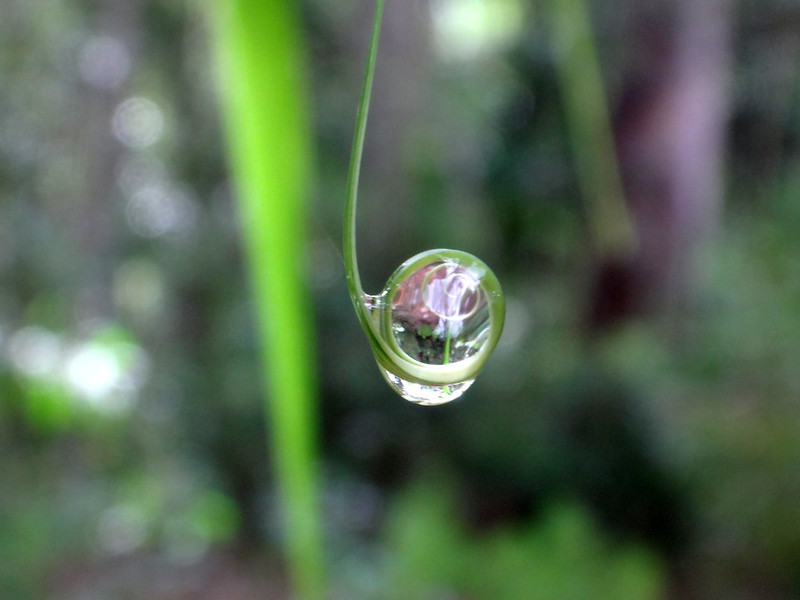
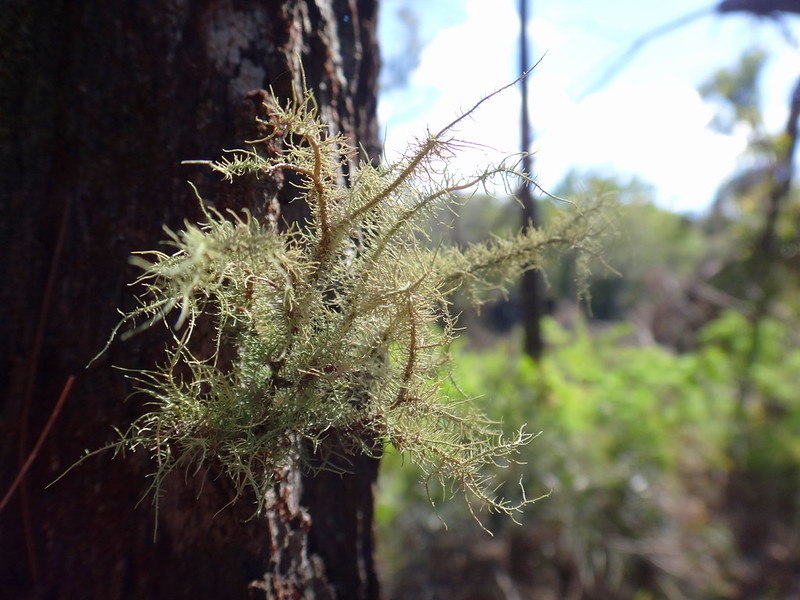
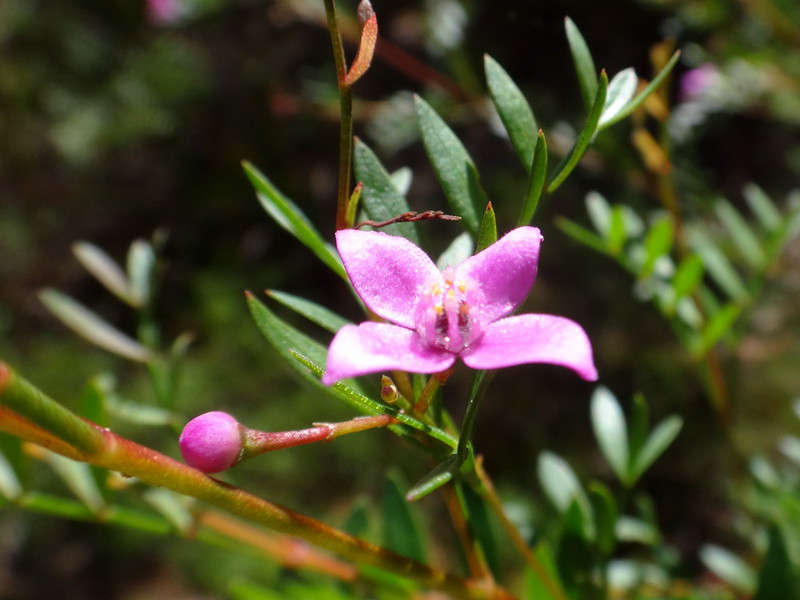
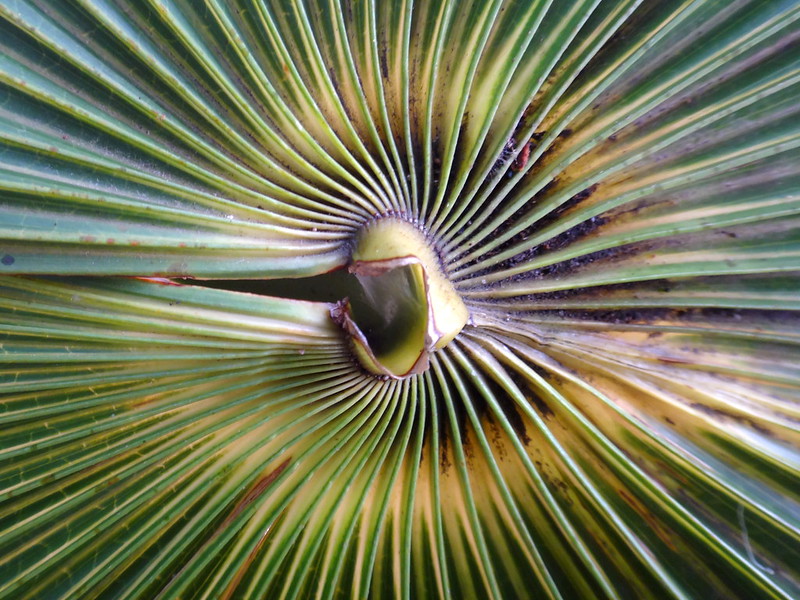
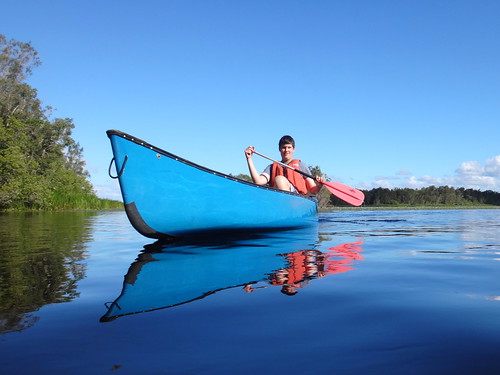
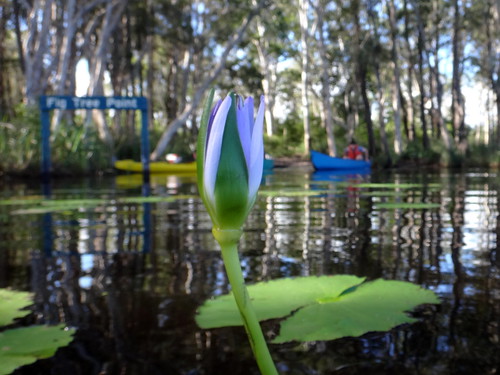
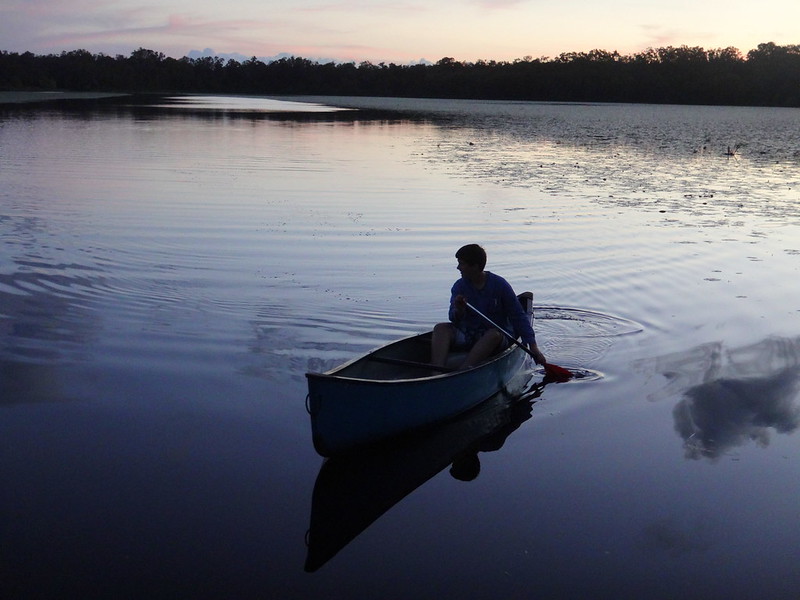





No comments:
Post a Comment